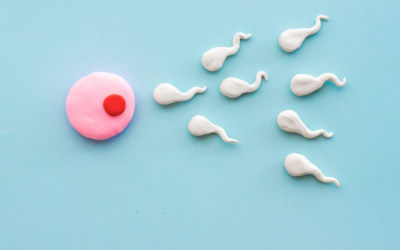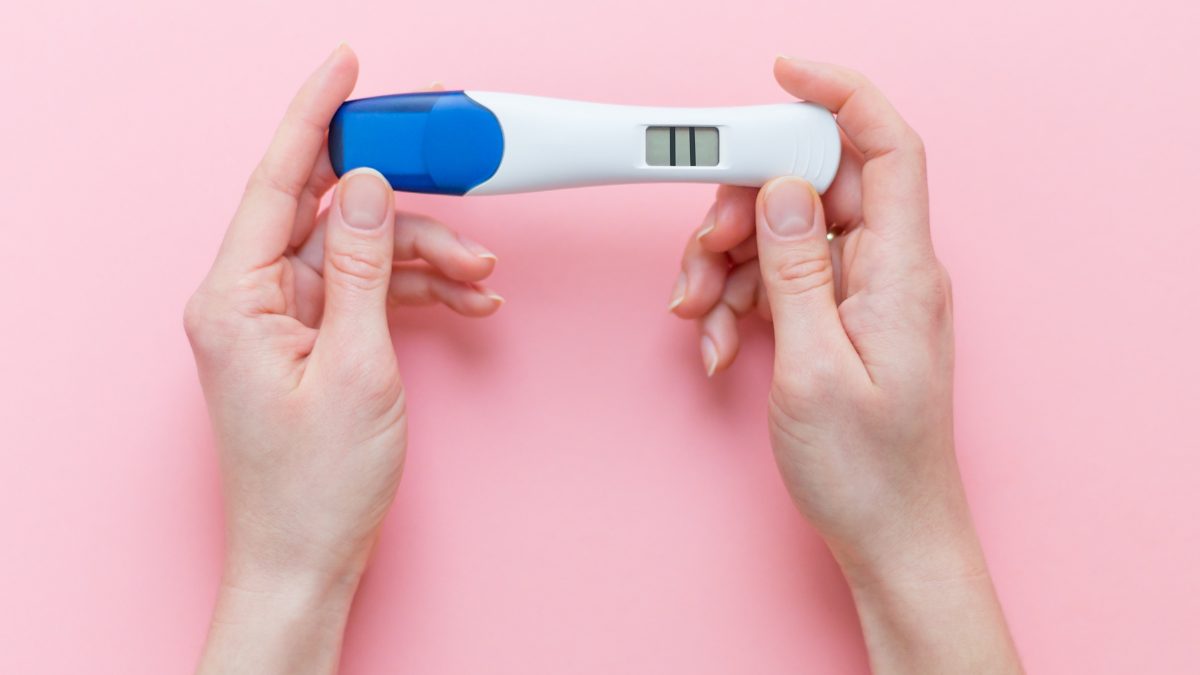Finding out whether you’re pregnant can feel overwhelming, exciting, or even nerve-wracking. One of the most common questions women ask is: “when to take pregnancy test?” If you’re trying to conceive—or even if you weren’t expecting it—knowing the right time to test can save you stress and confusion. Pregnancy tests work best when you know the signs to look for and understand how your body responds in those early days.
In this post, we’ll go through the most important signs that mean you should take a pregnancy test immediately, along with guidance on when to take pregnancy test for accurate results.
Table of Contents
Why Timing Matters: Understanding When to Take Pregnancy Test
Pregnancy tests are designed to detect a special hormone called hCG (human chorionic gonadotropin). This hormone is produced once a fertilized egg attaches to the lining of your uterus, a process known as implantation. Implantation typically happens 6 to 12 days after ovulation, and only then do hCG levels begin to rise.
If you test too early, your body may not have produced enough hCG for detection, leading to a false negative result. That’s why knowing when to take pregnancy test is critical.
The Best Time to Test
- On the first day of your missed period – Most experts agree this is the most reliable time.
- About 10–14 days after ovulation – If you track your cycle, this is usually when enough hCG is present.
- First thing in the morning – Morning urine is more concentrated and more likely to give an accurate reading.

8 Key Signs You Should Take a Pregnancy Test Immediately
Your body often gives you signals before you even think about testing. If you notice any of the following, it might be time to grab that test kit.
1. Missed Period
A missed period is the clearest and most reliable early sign that you may be pregnant. For women with regular menstrual cycles, their body usually gives them a predictable pattern every month. When that pattern suddenly changes—especially if your period doesn’t arrive on time—it’s often the first clue that you should take a pregnancy test.
Why is a missed period such a strong indicator?
- Ovulation occurs around the middle of your cycle, and if the egg is fertilized, your body shifts into pregnancy mode.
- Instead of shedding the uterine lining (your period), the body maintains it to support a growing embryo.
- This leads to the absence of your normal monthly flow.
However, it’s important to consider that not all missed periods mean pregnancy. Factors such as:
- Stress and anxiety – High stress levels can interfere with ovulation.
- Weight changes – Rapid weight gain or loss may disrupt your cycle.
- Illness or medications – Certain health conditions and medicines can delay periods.
- Polycystic ovary syndrome (PCOS) – A common condition that causes irregular cycles.
That said, if your cycle is usually regular and you suddenly miss a period, the most responsible next step is to test. Even if you are under stress or experiencing lifestyle changes, pregnancy remains one of the most likely explanations for a missed cycle.
If your period is more than a week late, don’t wait—take a pregnancy test immediately. This is one of the most accurate times for when to take pregnancy test, as hormone levels are typically high enough to detect.
2. Nausea and Morning Sickness
Nausea, often called “morning sickness,” is a classic pregnancy symptom. While it can occur at any time of day, many women experience it most strongly in the morning. If you suddenly start feeling queasy or find yourself running to the bathroom, it may be time to consider a pregnancy test.
Why does this happen?
- Rising hCG levels can upset the digestive system.
- Increased estrogen can slow down digestion, adding to feelings of nausea.
- A heightened sense of smell makes certain odors unbearable, triggering gag reflexes.
Key things to notice:
- Timing – Nausea typically appears between 2 to 8 weeks after conception, often before you even realize your period is late.
- Food aversions – Strong dislike for foods you previously enjoyed may be linked to pregnancy.
- Vomiting without illness – If you’re vomiting without any clear cause like food poisoning or flu, pregnancy could be the reason.
Not every woman experiences morning sickness, but about 70–80% of pregnant women report it in early pregnancy. If your nausea comes suddenly and you also have other signs like a missed period or breast tenderness, you should not ignore it.
If you’re wondering when to take pregnancy test because of nausea, the best time is when your period is late. But if the nausea feels severe and persistent, you can test earlier with a sensitive kit.
Remember, occasional nausea can come from stress, indigestion, or infection. But if it’s frequent and combined with other pregnancy symptoms, it’s time to test immediately.

3. Breast Tenderness and Changes
Breast changes are one of the earliest and most noticeable signs of pregnancy. If your breasts suddenly feel different, it may be your body preparing for pregnancy.
Why it happens:
- Rising progesterone and estrogen levels cause the breast tissue to grow.
- Increased blood flow makes breasts feel swollen and heavy.
- Nipples may become more sensitive or even painful to touch.
Signs to watch for:
- Soreness or tenderness – Different from PMS breast pain, this tends to last longer.
- Swelling – Breasts may look fuller or heavier than usual.
- Darker areolas – The area around the nipple often darkens in early pregnancy.
- Visible veins – Some women notice more pronounced veins due to increased blood supply.
It’s common to confuse PMS-related breast pain with pregnancy-related breast changes, but there are differences. PMS tenderness usually fades when your period begins, whereas pregnancy tenderness continues and intensifies.
If your breasts feel unusually sore and your period doesn’t come on time, that’s an important clue. This is one of those body changes that should make you ask: “Is this the right time for when to take pregnancy test?”
While hormones, medications, and even exercise can sometimes affect breast sensitivity, when it happens alongside other signs—like fatigue, nausea, or missed periods—pregnancy becomes the most likely explanation. Testing right away will help confirm.
4. Fatigue That Doesn’t Make Sense
Feeling constantly tired for no clear reason is another early pregnancy sign. Pregnancy fatigue is more intense than the usual end-of-day tiredness. It’s the kind of exhaustion where you feel drained no matter how much you sleep.
Why it happens:
- Progesterone hormone surge makes you feel sleepy.
- Your body begins using more energy to support a potential pregnancy.
- Blood sugar levels and blood pressure may drop, leading to fatigue.
Clues that fatigue is pregnancy-related:
- Persistent tiredness that doesn’t improve with rest.
- Sleepiness throughout the day, even after a full night’s rest.
- Difficulty focusing or staying alert in routine tasks.
Of course, other factors like stress, poor diet, lack of sleep, or anemia can also cause fatigue. But pregnancy fatigue often feels different—like a constant heaviness in your body.
If you’ve noticed extreme tiredness that doesn’t match your lifestyle, especially if it’s accompanied by a missed period or nausea, that’s a strong indicator of when to take pregnancy test.
Pregnancy-related fatigue usually begins as early as the first week after conception and can last through the first trimester. So, if you’re suddenly feeling wiped out without reason, it’s smart to test right away.
5. Increased Urination
If you’re suddenly running to the bathroom more often than usual, it may be an early sign of pregnancy. This symptom usually shows up around the 6th to 8th week after conception.
Why it happens:
- The growing uterus begins pressing on the bladder.
- Increased hCG levels boost blood flow to the pelvic area.
- Kidneys work harder to filter waste for both you and your baby.
What to look for:
- Frequent urge to urinate, even if your bladder isn’t very full.
- Waking up at night to pee more than usual.
- No signs of infection (burning, fever, etc.).
It’s important to note that frequent urination can also result from:
- Urinary tract infections (UTIs)
- High fluid intake
- Caffeine consumption
However, if you’re experiencing increased urination without pain or infection symptoms—and especially if you also have a missed period—it’s likely pregnancy.
This is one of those subtle yet telling symptoms. If you keep asking yourself “Is this the right time for when to take pregnancy test?”, frequent urination is a strong “yes.”

6. Light Spotting or Implantation Bleeding
Not all bleeding means your period has arrived. Some women experience implantation bleeding, which can be mistaken for a light period.
Why it happens:
- When a fertilized egg attaches to the uterine lining, tiny blood vessels may break.
- This causes light spotting, usually pink or brown in color.
How to identify implantation bleeding:
- Timing – It typically occurs 6–12 days after ovulation.
- Color – Light pink or brown, unlike the bright red of menstrual blood.
- Flow – Much lighter than a regular period; may last a few hours to 2 days.
- No clots – Unlike periods, implantation bleeding doesn’t have clots.
This can confuse many women, especially if it happens around the time they expect their period. But if bleeding is unusually light and shorter than your normal cycle, it’s worth taking a pregnancy test.
If you’ve experienced spotting along with other symptoms like sore breasts or nausea, that’s a strong indicator. For accurate results, test a few days after spotting stops, as hCG levels may not be high enough immediately.
7. Heightened Sense of Smell or Food Aversions
A sudden change in your relationship with food and smells is a classic early pregnancy sign.
What happens:
- Increased hormones make your senses sharper.
- Every day smells (perfume, cooking, smoke) may suddenly feel overwhelming.
- Foods you once loved might now make you feel sick.
Clues it may be a pregnancy:
- Dislike for strong-smelling foods like garlic, onions, or meat.
- Cravings for unusual combinations (like pickles with ice cream).
- Feeling nauseous from simple household odors like soap or coffee.
This symptom often appears early, sometimes even before a missed period. If you find yourself gagging at smells you used to tolerate, it’s time to ask yourself if this is the right moment to take a pregnancy test.
Of course, changes in appetite or sensitivity to smell can also result from illness, stress, or dietary changes. But when combined with a late period or nausea, pregnancy is the likely explanation.
8. Abdominal Cramping Without Your Period
Mild cramping can be confusing—are you about to start your period, or is it something else? Many women don’t realize that early pregnancy can cause cramping, too.
Why does it happen:
- The uterus begins to expand to accommodate the embryo.
- Hormones cause the uterine muscles to contract lightly.
- Implantation may also cause brief cramping.
How to distinguish pregnancy cramping from period cramps:
- Intensity – Pregnancy cramps are usually milder.
- Timing – They may occur around the time of your expected period, but without bleeding.
- Accompanied symptoms – Tender breasts, fatigue, or spotting.
If you’re experiencing cramps but your period hasn’t arrived, that’s an important clue. Unlike PMS cramps that lead to bleeding, pregnancy cramps stop without a full flow.
If cramps persist for days and are paired with a missed period, it’s wise to test. This is one of the trickier symptoms, but also one of the most telling if you know what to look for.
How Pregnancy Tests Work
Pregnancy tests are designed to detect a hormone called human chorionic gonadotropin (hCG), which your body starts producing shortly after a fertilized egg implants into the uterine lining. Implantation usually occurs 6 to 12 days after ovulation, and from then on, hCG levels rise rapidly, doubling every 48 to 72 hours in early pregnancy.
There are two main types of pregnancy tests: urine tests (home tests) and blood tests (done by a doctor).
- Urine-based tests: These are the most common and can be done at home using a test strip, midstream test stick, or digital kit. You either hold the stick in your urine stream or dip it in a cup of collected urine. The test looks for the presence of hCG, and most brands claim 99% accuracy if used correctly after a missed period.
- Blood tests: Conducted at a doctor’s office, these can detect lower levels of hCG earlier than urine tests, sometimes within 6 to 8 days after ovulation. There are two types—qualitative (checks for presence of hCG) and quantitative (measures the exact level of hCG).
When deciding when to take pregnancy test, timing matters. Testing too early may give you a false negative because hCG levels may not be high enough yet. That’s why most experts recommend testing on the first day of your missed period for reliable results. For the most accurate outcome, use first-morning urine, as it is more concentrated.
Understanding how pregnancy tests work not only helps you avoid confusion but also ensures you test at the right time, reducing the emotional rollercoaster of false results.
Common Mistakes to Avoid When Testing
Even though pregnancy tests are simple, small errors can lead to inaccurate results. Many women unknowingly make mistakes that either give a false negative or make them doubt the outcome. Knowing these mistakes helps you avoid unnecessary stress and ensures you test with confidence.
1. Testing too early
The most common mistake is testing before your body has enough hCG to detect. Even the most sensitive tests can miss early pregnancy if you check too soon. Always wait until the first day of your missed period for accuracy.
2. Not using first-morning urine
Urine is most concentrated in the morning, giving the test the best chance of detecting hCG. Testing later in the day with diluted urine may lead to a false negative.
3. Not following instructions
Every brand has slightly different directions. Whether it’s how long to hold the test in urine, how long to wait for results, or how to interpret the lines, skipping steps can cause errors.
4. Reading results too late
Most tests instruct you to check results within a specific time window (usually 5–10 minutes). Checking too late may cause evaporation lines that mimic a faint positive.
5. Drinking too much water before testing
Over-hydrating dilutes hCG in your urine, lowering the test’s accuracy.
If you’re unsure, always repeat the test after a few days. Remember, the key to knowing when to take pregnancy test isn’t just about timing, but also about using the kit correctly. By avoiding these common mistakes, you’ll save yourself emotional ups and downs and get a result you can trust.
Types of Pregnancy Tests
Pregnancy tests aren’t one-size-fits-all. There are different types, each with its own benefits, drawbacks, and ideal use. Knowing the types helps you choose the right one for your situation.
1. Strip Tests
- Affordable and widely available.
- You dip the strip into a cup of collected urine.
- Simple but sometimes harder to read because faint lines can be confusing.
2. Midstream Tests
- A more hygienic version where you urinate directly on the stick.
- Easy to use, portable, and more convenient than strips.
- Slightly more expensive.
3. Digital Tests
- Provide results in words (“Pregnant” or “Not Pregnant”), removing the guesswork of faint lines.
- Some can estimate how many weeks since conception.
- Costlier than basic tests but often worth the clarity.
4. Early Detection Tests
- Claim to detect pregnancy 5–6 days before a missed period.
- Useful for women who can’t wait, but the results are less reliable than testing after a missed period.
5. Blood Tests
- Performed by a doctor.
- Qualitative tests confirm the presence of hCG, while quantitative tests measure the exact levels of hCG.
- Can detect pregnancy earlier than urine tests and help monitor pregnancy health.
When you ask yourself when to take pregnancy test, choosing the right type matters. If your period is late, a home midstream or digital test will usually be enough. But if you want confirmation or earlier detection, a blood test at the clinic is the best option.
When to Repeat the Test
Sometimes, even if you suspect pregnancy, your first test might come back negative. This doesn’t always mean you’re not pregnant—it may just mean you tested too early. Knowing when to repeat the test can make a big difference.
When to Retest:
- If your period is still late: If you tested on the first day of your missed period and got a negative, wait 2–3 days and test again. hCG levels double every couple of days, so a later test may pick it up.
- If you tested before your period: Early detection kits can sometimes miss pregnancy. If you tested before your missed period, repeat testing once your period is officially late.
- If symptoms continue: If nausea, fatigue, or breast tenderness persist despite a negative test, retest or consult a doctor.
Why Retesting Matters
- False negatives are common early on.
- Irregular cycles may cause you to miscalculate ovulation and test too soon.
- Chemical pregnancies (very early miscarriages) can cause confusing results.
If your second test is still negative but your period doesn’t arrive within a week, it’s time to schedule a blood test with your doctor. Blood tests are more sensitive and can confirm even very low levels of hCG.
Repeating the test ensures peace of mind and gives your body enough time to build detectable hCG levels. If you’re wondering when to take pregnancy test after an initial negative, the rule is simple: wait a few days and try again.
Myths About Pregnancy Testing
There are countless myths surrounding pregnancy tests, and believing them can lead to unnecessary confusion. Let’s clear up some of the most common misconceptions.
Myth 1: You can test right after sex.
Fact: hCG isn’t produced immediately. It takes days after implantation (6–12 days after ovulation) for pregnancy to be detectable. Testing right after sex will always show negative.
Myth 2: A faint line means negative.
Fact: Even a faint second line usually means positive. hCG may just be at a lower level.
Myth 3: Testing at night is just as good as in the morning.
Fact: First-morning urine is more concentrated, making early detection more accurate.
Myth 4: All pregnancy tests are 100% accurate.
Fact: While most claim 99% accuracy, testing too early, not following instructions, or diluted urine can affect results.
Myth 5: Stress alone can cause a false positive.
Fact: Stress may delay your period, but it won’t create hCG. A positive result almost always means pregnancy.
Myth 6: You can’t get pregnant if you had your period.
Fact: Some women experience light bleeding during early pregnancy, which can be mistaken for a period.
When wondering when to take pregnancy test, don’t rely on myths or old wives’ tales. Stick to science-backed facts, test after a missed period, and confirm with a doctor if needed.
What to Do After a Positive Result
A positive pregnancy test is life-changing. Whether planned or unexpected, it’s the first step in a new journey. Once you see those two lines or a digital “Pregnant” result, here’s what you should do:
1. Confirm with a doctor
Schedule an appointment to confirm the pregnancy through a blood test or ultrasound. Your doctor will also check your health and discuss prenatal care.
2. Start prenatal vitamins
If you haven’t already, begin taking prenatal vitamins with folic acid to support early fetal development and prevent birth defects.
3. Make healthy lifestyle changes
- Stop smoking and drinking alcohol.
- Limit caffeine.
- Focus on a nutrient-rich diet with plenty of fruits, vegetables, and whole grains.
4. Manage your emotions
It’s normal to feel excited, scared, or even overwhelmed. Talk to your partner or a trusted friend for support.
5. Plan your next steps
Think about prenatal appointments, lifestyle adjustments, and preparing mentally and emotionally for pregnancy.
A positive test means your body has enough hCG to confirm pregnancy, but it’s just the beginning. Acting quickly to care for yourself will give your baby the best start.
Conclusion
Understanding when to take pregnancy test is one of the most important steps in your motherhood journey. While a missed period is the most common and reliable sign, other symptoms such as nausea, breast tenderness, fatigue, and unusual changes in your body should not be ignored. Knowing the right timing, using the correct test, and avoiding common mistakes will help you get accurate results without unnecessary stress.
If your result is positive, it’s important to schedule a visit with your healthcare provider to begin prenatal care. If the test is negative but you still feel pregnant, repeat the test after a few days. Listening to your body and trusting your instincts will always guide you in the right direction.
Pregnancy is a life-changing experience, and taking a test at the right time can give you clarity, peace of mind, and confidence in planning your next steps.







